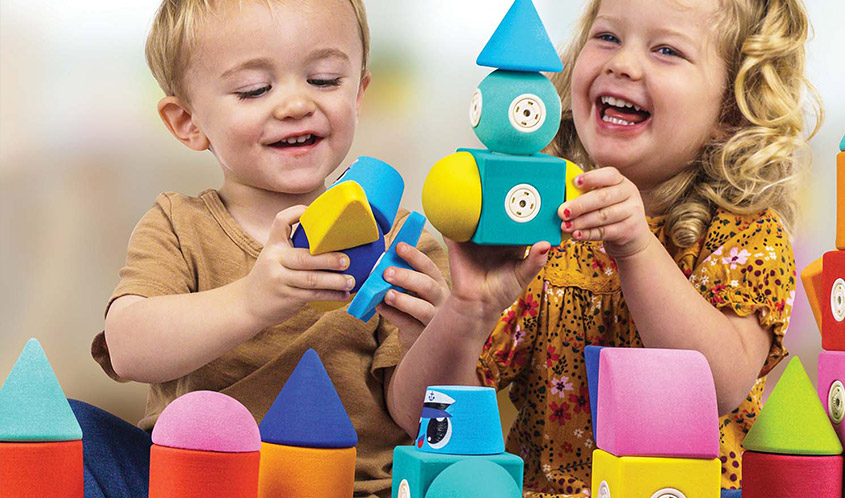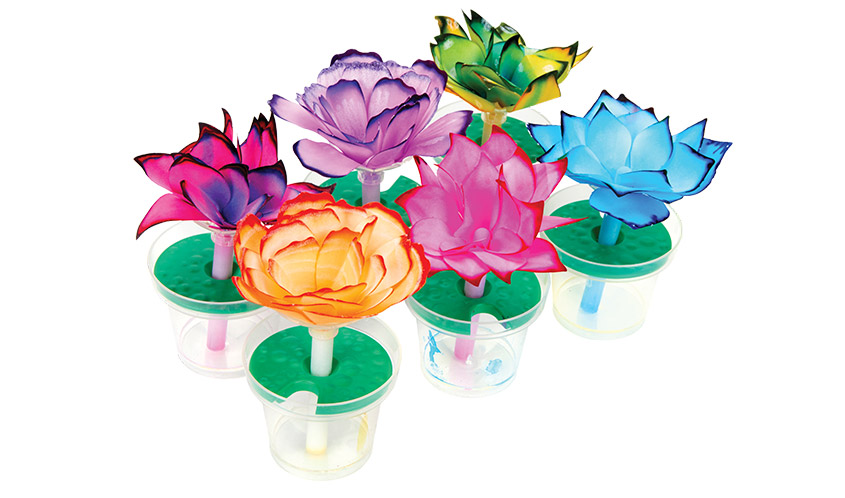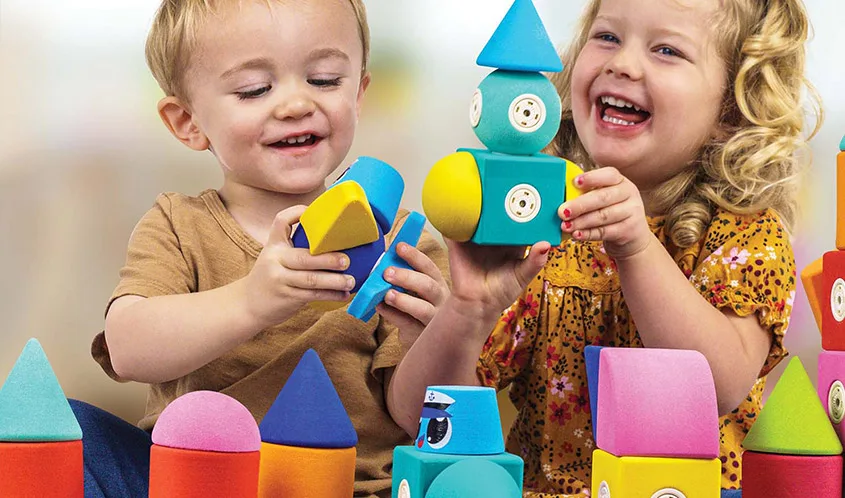
by Wendy Smolen, founder, wendysmolen.com
This may sound counterintuitive, but an effective STEAM toy doesn’t have to include technology. Probably more than the science, engineering, art, and math skills of STEAM, it’s the technological “T” that will revolutionize the future. But technology is already integrated into nearly every aspect of every kid’s life, from infants’ first toys to teens’ social presences; from preschool to after-school to out of school. A younger, tech-fluent generation is on the rise — one that innately understands technology. Now, the curiosity inspired by scientific inquiry, the exploration of engineering solutions, the creativity of the arts, and the logic of math are more important than ever. Play is one of the most important ways to ensure that we raise engaged, responsible, critically thinking, and caring individuals.
Many toy companies are recognizing this, promoting the other skills in STEAM and creating products that de-emphasize, or don’t even use, technology. In turn, smaller stores that don’t necessarily display toys in a designated STEAM aisle have the opportunity to showcase the other attributes of play.
“S” IS FOR SURPRISE
Part of the fun of science is the surprise element that comes from experimentation. Remember when you first heard about capillary action? Crayola’s STEAM Paper Flower Science Kit demos it in action. Start by assembling a paper flower; attach it to the core stem and “plant” it in a pot; add colored water; and watch the petals bloom in color. Change the water color and see new shades seep up the stem. It’s simple, memorable, understandable, and fun! Science also comes into play with Oribel’s VertiPlay STEM Marble Run, a dynamic track that kids build on the wall and entices them to experiment with physics strategies, including rotation, incline, and pivot — even though they may label them round and round, fast and slow, or up and down.

“E” IS FOR ENGAGEMENT
Build, bash, and build again. Trying out engineering strategies for best case scenarios encourages kids to test and tinker. For kids as young as 18 months, Blue Marble, a licensee of National Geographic, introduced Blockaroo Magnetic Foam Builders, which are soft-textured, magnetic blocks that click together no matter what side kids connect, encouraging open-ended building and imagination. Edushape’s Magna-Tic Marble Run empowers preschoolers to build their own magnetic towers and tracks. Kids watch how the large-size marbles descend down the run. For older kids, Ravensburger’s Escape Puzzles bring the well-loved challenges of an escape room onto your family’s table. The pieces fit together in multiple places, giving clues to objects that will assist an “escape.” Play combines problem solving, critical reasoning, logical deduction, social collaboration, and more than a little bit of luck.
“A” IS FOR ANYTHING GOES
Creativity is what makes an idea unique, turning the tried and true into the “you.” Thames & Kosmos introduced Creatto, building kits with just two shapes of flexible plastic pieces that interlock to create four or more light-up sculptures. Also on the lighter side of creativity, Brainy Yak Labs’ Party Lamp is easy enough to build in just 30 minutes using 14 lamp components, LEDs, and a microcontroller. Once built, kids can personalize it with included erasable markers and reusable stickers. LEGO enters the art world with Dots, which feature multiple shapes and colors of small mosaic-type tiles that click onto bases such as bracelets, jewelry stands, and pencil holders to make personalized, useful decorations.
“M” IS FOR MANIPULATE
Hands-on learning is an effective strategy to teach math skills. From the early abacus to the perennial logic of the Rubik’s Cube, you can count on the physical sense of touch to power up play. There’s something irresistible about using a scale. How high or low can you go? Hape’s Monster Math Scale uses weighted chips numbered from 1 to 9 to help kids check and balance their figures. Math and reasoning puzzles can be addictive in the hands of a kid. Smart Games takes play to new levels with the tricky Plug and Play Puzzle designed for kids ages 6 and up, and the Top Spot card game designed for kids ages 8 and up.
This article was originally published in the October 2020 edition of the Toy Book. Click here to read the full issue!


